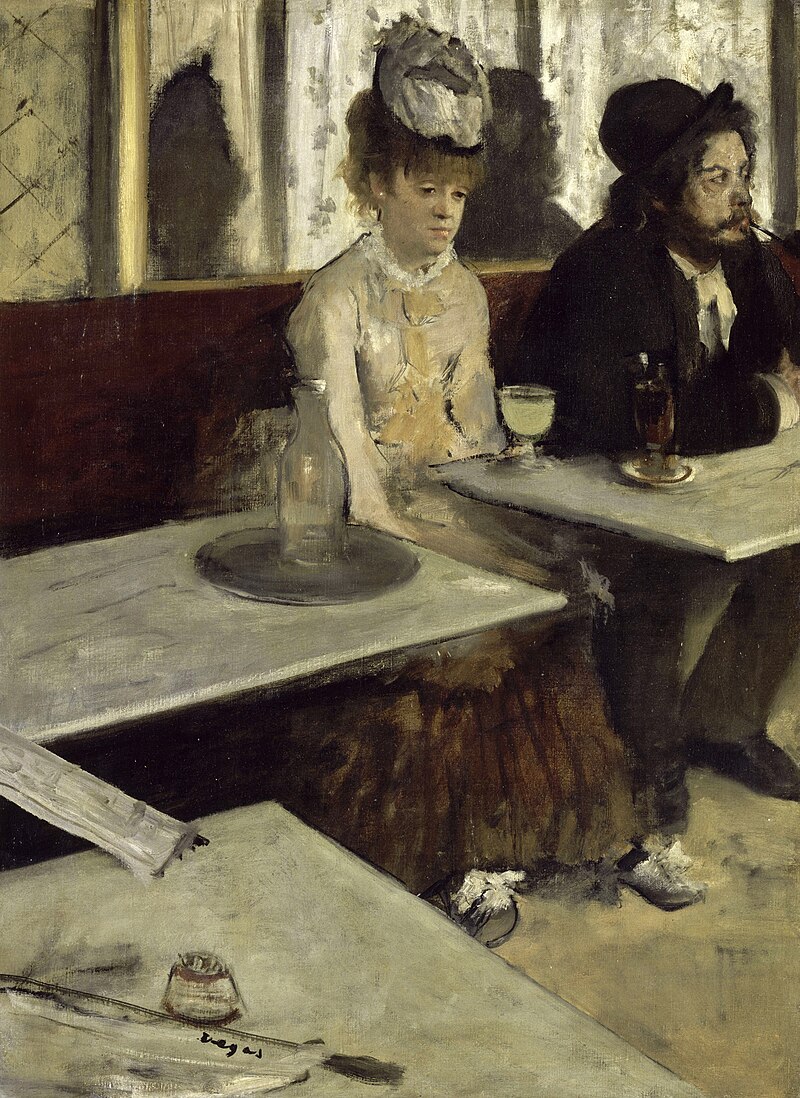The primary ingredients of absinthe from what I understand are Wormwood, anise, and fennel.
I am pretty sure all of these were favorite medicinal herbs of Saint Hildegard.
The wormwood is what's supposed to be the kicker. In 19th century France, there was a reefer-madness sort of backlash when it was alleged that common criminals were all addicted to absinthe, leading to that liqueur being outlawed. Thus, paintings like the one by Edgar Degas below.

The potentially troublesome compound is thujone, also found in juniper and other such plants. At lower doses it's a dewormer, hence "wormwood" and St. Hildegard's medieval recommendation, but at higher doses it can be a hallucinogen, convulsant, and cause permanent damage to internal organs.
Wormwood,
Artemisia absinthium, is one of a family of herbs that include mugwort,
Artemisia vulgaris, a very common weed. It has a resiny sweet scent so usually I don't bother pulling it (see image below).

I did know that mugwort has that name because it was used to flavor mugs of mead and beer, but I didn't know that it was related to the absinthe flavoring too. For contrast, below is an image of the
absinthium plant, which seems to be more silvery and feltlike.

Then there's the Wormwood of Revelations, but that's a whole other topic....